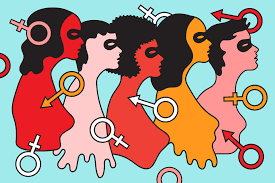Archaic Sex Ed Policies are Just Another Symptom of Heteronormativity

The term “sex” was first introduced to me in seventh grade. My teacher defined it as “sexual contact between two individuals involving penetration,” which to me, seemed like an appropriate phrase to define the topic I found utterly uninteresting. In the months that followed the term was thrown around probably a hundred times, each instance reinforcing my personal perception of sex. I went through three years of this education before realizing the heteronormativity I had both bared witness to and become a part of. The definition I had been taught was ingrained in those around me, so much so that it was no longer necessary for others to stigmatize non-heterosexual behaviors, as we did it ourselves. This disregard for LGBT youth begs the question, does U.S. sex-ed policy still abide by heteronormative standards and ideals?
Comprehensive sex ed, the alternative to our current form of education, has been a topic of wide debate across America. On one hand, Conservatives argue that the discussion of safe sex encourages the action itself. They often compare it to the use of drugs by stating that you wouldn’t teach children not to smoke marijuana and then show them how to light a blunt. However, the rhetoric that advocating only for abstinence will prevent teens from having sex feels idealistic in nature, a thought that has been empirically proven. In some sense, focusing 100% of governmental resources for sex education on abstinence is like betting it all in the final round of Jeopardy. It may work, but if it doesn’t, you’re left with nothing, and even if it does, you could have won using far less risky options.
Furthermore, a lack of regard for education past abstinence, and thus for an inclusive model of safe sex, naturally advocates for virginity as a birth control option. This, I believe, is where heteronormativity begins to exist in abstinence-oriented education. The true definition of virginity has yet to be concretely defined in my classrooms, yet continually is emphasized as abiding by the framework of a penetration-oriented definition of sex. This inadvertent definition is for obvious reasons inaccessible and damaging to queer females, as it reproduces a cycle of using their sexuality as an alternative. Similarly, the concept of “typical” sex occurring between a man and woman marginalizes queer youth of all genders. The continual use of their sexuality as an add-on term furthers a society that views LGBT youth as divergent from sexual norms.
Heteronormative and cisnormative sexual education carry with them the potential to invalidate and denigrate massive populations of LGBT youth. If students are continually conditioned to approach sex from a non-inclusive viewpoint, any part of their sexuality that does not comply the ideas they have been taught by their educators will be seen as an unfortunate and unforeseen mistake. Governmental support of these policies further alienates these groups, as the enforcement of such standards has come to largely contribute to the lack of acceptance facing queer youth. The effects of these principles can already be seen today. LGB youth are six times as likely to attempt suicide when compared to their heterosexual peers, and 2.5 times more likely to inflict harm upon themselves. These statistics are symptoms of a heteronormative culture that is recreated through non-conformative sexual education.
Through comprehensive sexual education, the social effects plaguing the youth LGBT population can begin to be reversed. In addition to solving the existing problems, developing programs also provide a long list of additional benefits. Physical health-wise, additional protection options and requirements exist for queer youth that are not mentioned in today’s education. Additionally, the discussion of identity in comprehensive sexual education plans fosters an environment in which LGBT youth are both addressed and validated in a school environment. Both of these factors are key to the physical and mental health of LGBT students, as well as addressing the current issues that exist in queer discrimination.


